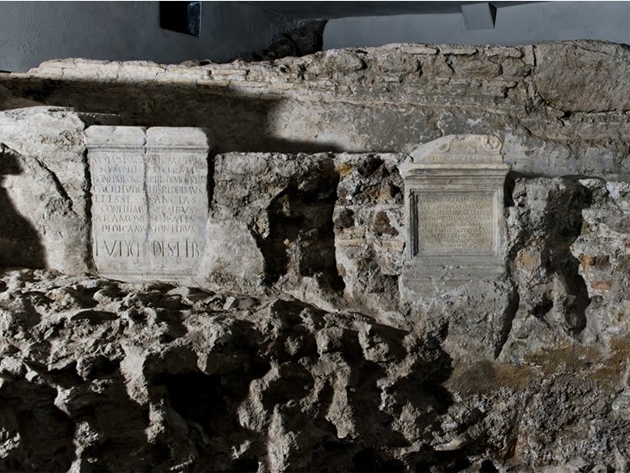
The Fountain of Anna Perenna was found in 1999 while conducting excavations for an underground car park at the corner of piazza Euclide and via G. Dal Monte in the northern district of Rome, Parioli. Excavations from six to ten metres below the street level unearthed the remains of a rectangular-shaped fountain with immured inscriptions bearing the name of the goddess. Anna Perenna was a divinity in Rome's most distant past who was celebrated on the day of the Ides of March, the most ancient Roman new year's day, as Ovid tells in his Fasti (The Calendar). The fountain is attested to in the I century B.C. and was used until the VI century A.D. The dried mud inside the cistern behind the fountain concealed many objects used in magical practises and religious rites: lead laminas inscribed with curses, lead receptacles containing anthropomorphic figures, a copper kettle, and numerous coins and lanterns. These and other objects are today conserved in the Epigraphs Section of the Museo Nazionale Romana at the Baths of Diocletian. The visit to the fountain is preceded by an itinerary describing the topography of the area in the Roman epoch, which starts at a cave on the slopes of the Parioli hills, and continues with a description of the remains of a building of the Roman age conserved in the Auditorium.
Information
Temporarily closed
 Condividi
Condividi
Location
To find out about all accessibility services, visit the Rome accessible section.











































